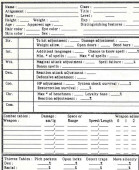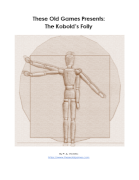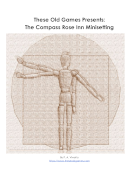To that end, I need to change several rules starting with e001.
e001+
The sector is at war. You are the captain of the Antelope II, a new type of privateer vessel. You have received a letter of marque and reprisal from the world of Regari enabling you to act as a privateer within the sector. In addition, you have received a small grant to obtain weapons and a crew. You are authorized to act in every part of the sector, except New Karma and Regari where one must behave like a normal civilian.
To pay off your grant of the ship, you must make a payment to the Regari system weekly. You may do this at any banking facility anywhere in the sector. The amount per week doesn't matter, but you must pay 1,000,000 secs. within 10 years. The Antelope II is 5 times the ship that an Antelope was, so this is a deal.
The grant allows for hiring a crew and equipping them. Roll 1d6*1000. You do not have to pay this back. You can keep anything you don't spend.
In the Regari system, you are not subject to search or seizure. Ignore these events.
The Antelope II is built to tech level 1 specs and is outfitted with 2 advanced hopper class ships boats, and a single set of tech level one guns and two empty turrets. Advanced hoppers have a fusion power pack built into the hull (e153, item 11) and produce life support like a regular starship. There is a brand-new skimmer in the ship's garage, also tech level 1. The ship has a medical bay/infirmary with a regrowth tank (e153, item 4). There is a suit room and crew airlock for utility suits. Additionally, there is a ready room for planning. You have 6 hypercharges. This ship does not have secret hiding spaces.
The letter of marque is your ship's papers. You personally own a utility suit, and a tech level 1 sidearm, plus have 10 repair units, 10 life support units, and 10 fuel units in one of the cargo bays.
Be on the lookout for slavers, found in r332. If offered slaves, you are obligated to purchase as many as possible, constrained by funds and crew space, for a base price of 100 secs. each. Once they are in your custody, you must do your utmost to protect them until they reach freedom. This means you must make for New Karma or Regari as fast as possible (double jumps are not required). Note: in any other system, you may be mistaken for a slaver.
If they are returned safely to the Colony on New Karma or the Port on Regari, the government will pay you a base price of 100 secs. per rescued slave and shave off 200 secs. from the amount you owe on your grant.
You are currently at the sole planet in the Regari system (r207a) of the Pavonis sector, at the spaceport (r205o). You check over your starship guns and personal sidearm and prepare to find targets for Regari. See r203 for the activities available to you. You need to hire a crew immediately. It is suggested that you have 1 engineer, 1 medic, 1 gunner, and 2 pilots, however, the ultimate decisions are yours.
You may opt not to make contact rolls until you have hired your whole crew. Also, you may skip over rolls of 3, no more rolls during this time due to government intervention. This is a one-time benefit and can be extended for as many days as you deem necessary. You may not leave the spaceport. Once your crew is assembled, you must make contact rolls for the rest of the game.
Hit locations need an update, too.
The Antelope II has a modification for hits and hit locations. This appears in many events (like e413 or e113), you may use this list. The ship can take 15 hits. It also has 2 heavily armored areas, medical and crew quarters.
2. Medical* or suit room (Odd is medical and even is the suit room.)
3. Pilotage
4. One of the turrets - roll 1-2 first turret (top), 3-4 second turret and 5-6 is the last.
5. Shuttle - 1-3 port side, 4-6 starboard side
6. Engineering
7. Garage
8-9. Port Cargo Bay
10-11 Starboard Cargo Bay
12. Crew Quarters* or Ready Room. (Odd is the quarters and even is the ready room.)
*Indicates a 50-50 chance of armor hit. An armor hit prevents damage to the protected section by turning it into a regular hit.
Radiation does not pass through the armor and does nothing to the crew in these areas, (e413 mostly).
To accommodate your new Advanced Hoppers, we need to update e214 with e214c.
Advanced Hopper (e214c)
The Advanced Hopper is an improved version of the basic Hopper. It is the same size as other Hoppers but has advanced fusion engines. The fusion engines do not require refueling (at least not for decades) and provide life support to the crew while in operation.
Fusion engines allow the Advanced Hopper to accelerate the same as Starships while also making it possible to escape high-gravity planets. While Advanced Hoppers do not have wings, they make use of a lifting body design and can glide just like a regular Hopper.
The crew compartment is divided into a 5 CU pilot area and a 6 CU passenger area. Hopper or boat guns can only be mounted in the 14 CU cargo area. Two sets of guns can be mounted. This is standard for military Hoppers.
The price for an advanced hopper is three times the base price of a regular hopper and is available wherever hoppers are found.
Since the Antelope II has armored areas, we need to address that with a new rule: r217d.
Antelope II Damage (r217d)
The Antelope II takes 15 hits to destroy. Sidearms and heavy hand weapons have no effect on starships unless an event paragraph indicates otherwise. Individual points of damage simply increase the risk factor when hyperjumping.
Some areas of the hull are protected by heavy armor: medical and crew quarters. When these areas are hit, there is a 50-50 chance of striking the armor instead. An armor hit redirects damage to one of the hull points. The armor includes radiation shielding, so characters in those areas are not killed by radiation damage of any kind.
Due to the changes to the Antelope II, r229d is used for old-school Antelopes while r229e is used for the Antelope II.
Starship Searches (r229e)
Some events require a search of the starship (by customs officials, a military patrol, quarantine officers, etc.). When this occurs, roll 2d6 and consult the results below to see which parts of the ship are searched. Anything in those compartments will be found. Items within activated stasis units are normally confiscated by authorities unless the event indicates otherwise:
Search Results:2-false accusation (e058);
3- Ready Room and Suit Suit Room
4- Engineering, all gun turrets, quarters, and pilotage.
5- Engineering, all gun turrets, and both cargo bays.
6- Quarters only.
7- Both cargo bays
8- Both cargo bays and both ship's boats.
9- Both ship's boats and the skimmer garage.
10- Both boats, pilotage, and quarters.
11- Medical/Infirmary and skimmer garage.
12-searcher is an old acquaintance, you have no difficulties, and nothing is searched.
I know, the original book obscured the areas with strange letter codes. I didn't like that much so I just spelled it out.
Additionally, e002 will be changed.
e002:
Foreign agents are in your area. Ignore this event in the Regari or New Karma systems. If your crew is off the ship, proceed directly to e018. If the ship is landed, go straight to e003.
If you are on your ship in space, roll on the following table:
2. Paletk ships approach. (e108)
3. Ships from Imperia approach. (e114)
4. Byzantium Secret Police. (e189)
5. Imperian customs agents. (e019)*
6. Talitarian Scouts. (e118)
7. Nothing interesting. (e096)
8. Cubro customs shakedown. (e019)*
9. Urushop customs patrol. (e019)*
10. Mynkurian attack (e095)
11. Nipna wardrone. (e098)
12. Roll again.
Each event is themed to a particular system and may occur in any system except Regari or New Karma.
When dealing with the three e019 results (*starred), the customs agents have 3 standard antelope ships with no weapon turrets. Your grant requires you to comply and pay all fines and duties. If you damage or destroy any customs ships or harm the crew, you will lose your grant and be wanted in every system.
As I play through this, I hope to expand the original events with a battle against the slavers and possibly an introduction of a second plot line about robots.
I expect to post once a week as the last time I did this once a day was too much.
(EDIT I have forgotten to add a link so you can download the original game.)












